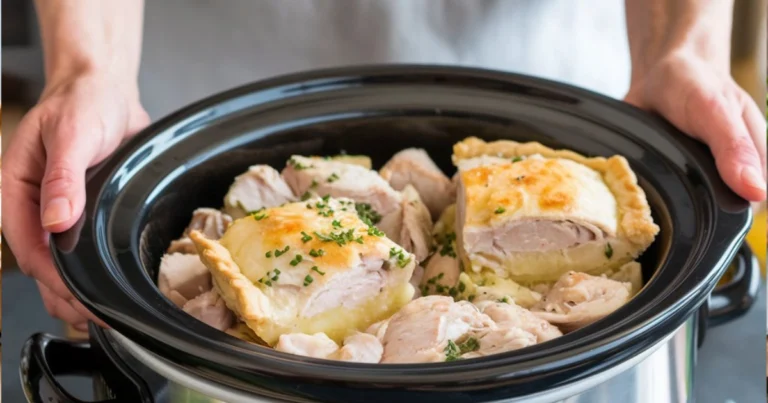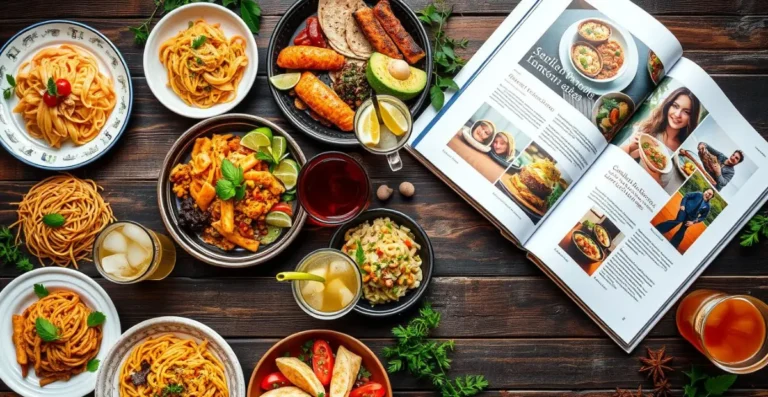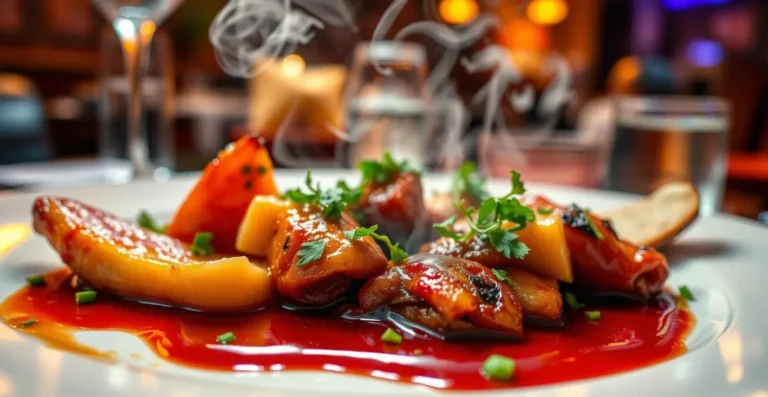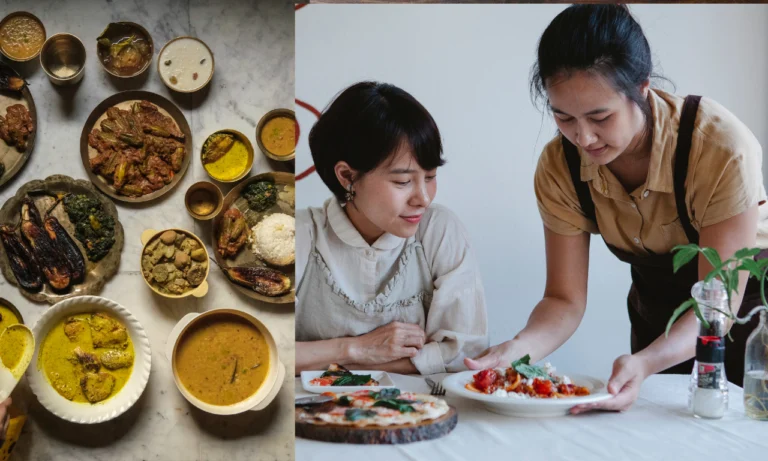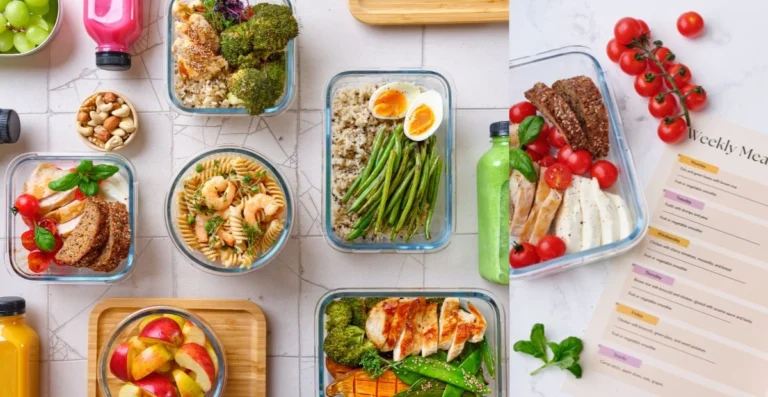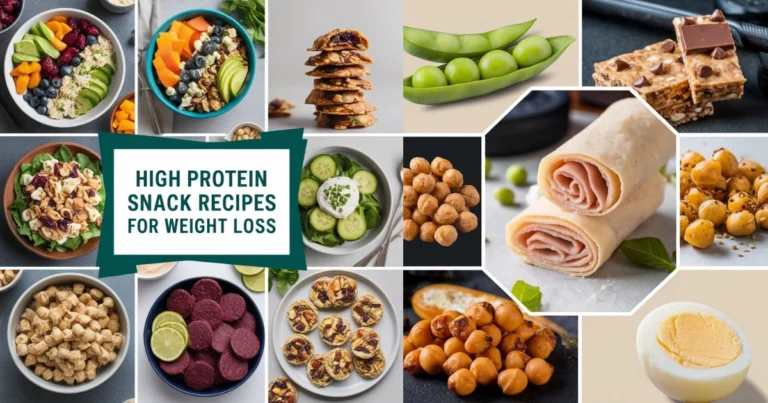food and drink: Food and beverage text writing
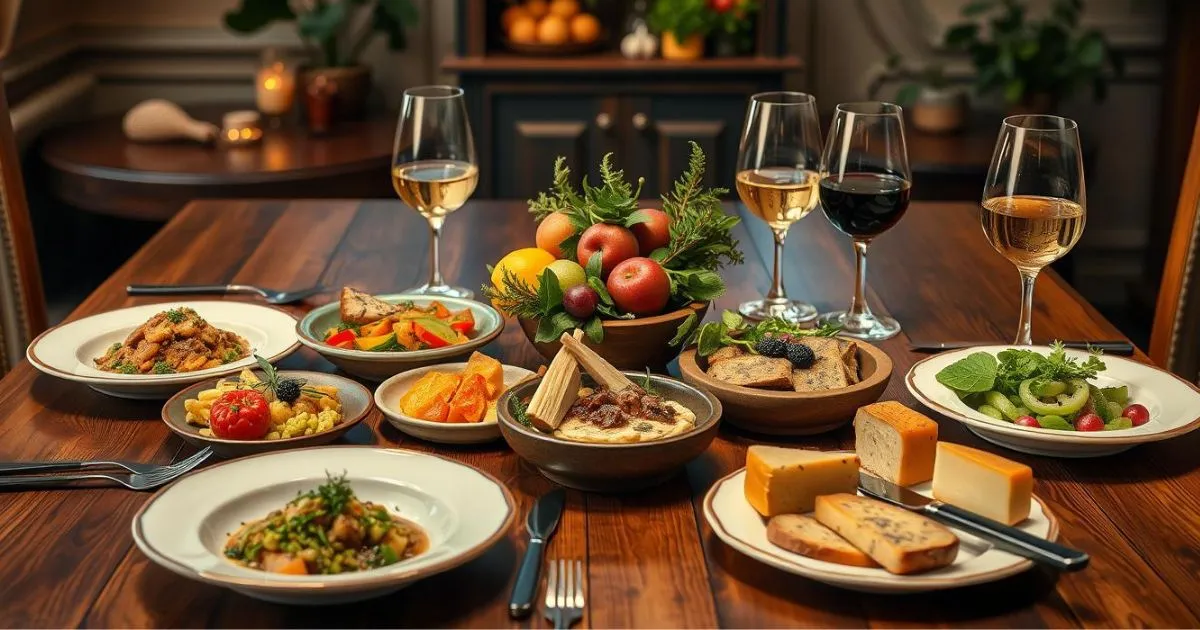
Table of Contents
In the world of food and drinks, words are very powerful. They can make a big difference in how we feel about what we read. Food and drink writing is like an art that needs to mix sensory details, evocative language, and a bit of storytelling.
The art of food and beverage text writing is more than just listing what a dish or drink looks like. It’s about bringing the whole experience to life. By using the right words, you can make something ordinary sound amazing. This leaves your readers wanting to try what you’ve described.
Key Takeaways
- The importance of captivating food and drink descriptions in the culinary world
- The power of sensory language in evoking the essence of a dish or a drink
- Strategies for crafting a unique voice and tone in food and beverage writing
- Techniques for describing flavors, textures, and the overall experience of a culinary creation
- The art of storytelling in food and drink writing to engage and captivate the reader
The Importance of Captivating Food and Drink Descriptions
In the culinary world, words are very powerful. They can take readers on a journey of taste and smell. Why is food and drink important? The way we talk about food can make a big difference in our experience.
Why Words Matter in the Culinary World
Food and drink descriptions are more than just lists. They open up a world of understanding and appreciation. What is the best topic about food? Good descriptions let readers see, smell, and taste something before they even try it.
The Power of Sensory Language
The best descriptions use the senses. How do you write an essay on the topic of my food? By talking about texture, smell, and taste, writers bring the experience to life. This makes readers want to try it for themselves.
“Food is not just sustenance, it’s an experience. The way we describe it can make all the difference.” – Julia Child, renowned chef and author Food and beverage text writing
Good food writing can make a big impact. It can inspire and make readers want more. By using words wisely, writers can create unforgettable experiences.
A vibrant, close-up scene of an elegantly plated gourmet dish, showcasing rich hues and textures; glistening sauces pooling artistically, fresh herbs sprinkled for a pop of color, and steam rising gently, with a background of soft, blurred dining atmosphere to evoke warmth and inviting aromas.
Setting the Tone: Crafting a Unique Voice
In the world of food and drink writing, having a unique voice is crucial. Your style makes you stand out and connects with your audience. It leaves a memorable mark. Creating a voice that reflects your brand and the culinary world is key to improving your food and drink writing.
Using sensory language is a big part of finding your voice. Words that describe what we see, smell, taste, touch, and hear bring your stories to life. Using vivid, emotive language grabs the attention of food and drink writing examples lovers and makes a lasting impression.
“The true essence of a dish is captured not just in its ingredients, but in the way those flavors and textures are brought to life through the power of words.” – Julia Child, renowned American chef and author
Also, having a consistent tone and style builds your brand identity. Your voice could be playful, elegant, or rustic. Food and drink writing topics: consistency is essential. It makes readers trust and feel familiar with your content.
By mastering the art of a distinct voice, you can make your food and drinks lesson plan pdf writing stand out. You connect with your audience, creating an unforgettable culinary journey – one word at a time.
How do you describe food and drinks?, Food and beverage text writing
As a food and beverage writer, you aim to take your readers on a journey with words. You need to create descriptions that make them feel like they’re tasting and smelling what you’re writing about. Learning to describe flavors and textures well is key. This way, you can make your readers want to try what you’re talking about.
Techniques for Describing Flavors and Textures
Good food and drink descriptions use sensory language well. Use strong adjectives to make your descriptions vivid. For example, you might say a chocolate mousse is smooth, velvety or a cocktail is zesty, citrusy.
Try to make your readers feel like they’re tasting or touching what you’re describing. Maybe it’s the crunch of a baguette or the silky feel of a poached egg.
Capturing the Essence of a Dish
A great food and beverage writer goes beyond just listing ingredients. They capture the true spirit of a dish or drink. They might talk about the atmosphere, the culture, or the emotions it brings up.
They add details that make you feel like you’re right there. Like the aroma of sizzling spices or the vibrant colors of a dish.
“The true essence of a dish is not just about the flavors and textures, but the story it tells.”
By being great at descriptive writing, you can make your readers’ experience better. Whether it’s for a menu, blog, or magazine, your words can change how people see food and drinks. They can spark a love for how do you describe food and drinks?
As a food and beverage writer, you’re a storyteller. You use your words to take your audience on a journey. Use sensory descriptions to open doors to a world of flavors and smells.
The Art of Food and Drink Storytelling
In the world of culinary writing, storytelling is key. By adding cultural and historical context to our food and drink descriptions, we make the experience richer. This helps readers appreciate the flavors and traditions that shape our culinary world.
Weaving Cultural and Historical Context
The story behind a dish or drink reveals its true essence. Exploring its origins, traditions, and cultural importance takes readers on a journey. This approach deepens their understanding and creates a strong emotional bond with the food and drink.
Take the tamale for example. It’s more than a savory treat; it’s a symbol of Mexican traditions. By diving into its history and significance, writers can craft a compelling story. This story captivates the reader and increases their appreciation for the tamale.
“The true flavor of a dish is not just found on the palate, but also in the stories that surround it.”
When talking about craft cocktails, writers can share the spirit’s origins and the distillation methods. They can also highlight the regional influences on its taste. This storytelling transports the reader to the place where the cocktail was born, offering a sensory experience beyond just drinking.
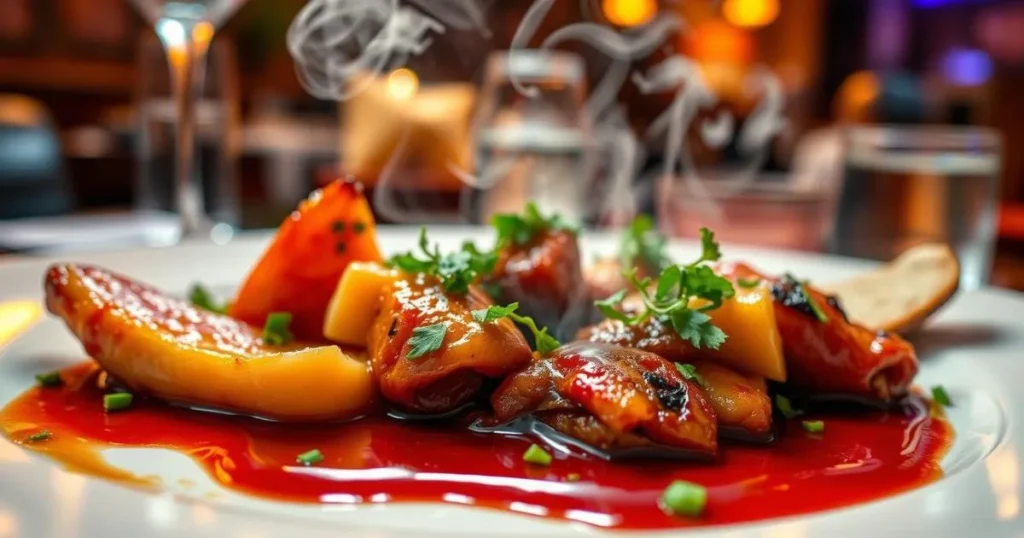
The art of food and drink storytelling is about blending cultural and historical elements. This approach engages the audience, creating a deeper connection to the food and drinks. It leaves a lasting impression on the reader.
Writing for Different Audiences and Platforms
In the world of food and beverage writing, it’s key to adjust your style for different audiences and platforms. Whether it’s for a blog, a restaurant menu, or a product review, your writing matters a lot. It can grab your readers’ attention and share your message well.
Tailoring Content for Blogs, Menus, and Reviews
Blogs are great for sharing stories and experiences. You can talk about the cultural background of dishes and your own adventures. Menus need short, exciting descriptions that make people want to try the food. Reviews should be fair, detailed, and helpful, giving your honest thoughts and tips.
To do well in these areas, know what your readers like. Change your language, tone, and details to fit their needs. This way, your content will connect with the right people at the right time.
| Platform | Key Considerations | Successful Strategies |
|---|---|---|
| Blogs | Engage readers with storytellingEmphasize personal experiences and insightsIncorporate multimedia elements (photos, videos) | Develop a distinct voice and narrative styleHighlight the cultural and historical context of dishesUse vivid sensory language to describe flavors and textures |
| Menus | Provide concise, enticing descriptionsHighlight unique features and ingredientsConvey the overall dining experience | Emphasize key flavor profiles and preparation methodsUse evocative language to spark the imaginationAlign menu descriptions with the restaurant’s brand and ambiance |
| Reviews | Maintain objectivity and credibilityProvide balanced assessments and recommendationsOffer insightful analysis and constructive feedback | Distinguish between personal opinions and factual observationsHighlight both positive and negative aspects, with supporting evidenceOffer suggestions for improvement or highlight exceptional experiences |
By learning to tailor your food and drinks worksheet content for various platforms and audiences, you can engage, inform, and inspire your readers. This leaves a lasting impact in the culinary writing world.
Researching and Immersing in the Food Scene
As a food and drink writing expert, it’s key to stay up-to-date with the culinary world. To write engaging descriptions, you need to dive into the food and drink scene. This means tracking trends and experiencing the sights, smells, and tastes that spark your creativity.
Doing thorough research is the first step to writing great food and drink content. Keep up with the latest by reading industry publications, blogs, and social media. Also, attend food festivals, workshops, and chef demos to learn and get inspired. Try new places, like local eateries and markets, to find unique stories and flavors.
- Follow food and drink influencers, chefs, and leaders on social media for updates.
- Subscribe to top food and drink magazines and websites to learn about trends.
- Connect with other food and drink writers to share insights and resources.
- Explore the local food scene by visiting farmers’ markets, artisanal producers, and independent restaurants.
- Join culinary workshops, tastings, and events to learn more about ingredients and cooking.
By being curious and hands-on, you’ll gain a deep understanding of the food and drink world. This knowledge lets you write food and drink writing examples that are both informative and engaging. Your readers will feel like they’re right there with you, experiencing the culinary journey.
| Research Strategies | Immersion Experiences |
|---|---|
| Industry publicationsBlogs and social mediaCulinary workshopsNetworking with peers | Local food festivalsSpecialty markets and producersCulinary tours and tastingsHands-on cooking classes |
“Truly understanding the food and drink you write about requires a deep dive into the sights, smells, and flavors that define the culinary experience.”
Food and Beverage Writing Ethics and Responsibility
In the world of food and drink writing, being objective and credible is key. As writers, we must give our readers honest, well-researched, and unbiased info. This is not just right; it also boosts our professional image and the whole industry’s integrity.
Maintaining Objectivity and Credibility
Objectivity is the heart of good food and drink writing. We must forget our personal likes and dislikes when we write. Our work should be based on facts, careful thought, and a real grasp of the topic.
Credibility comes from being accurate, open, and ethical. This means:
- Checking facts well before we share them
- Telling readers about any ties or sponsored content
- Respecting others’ privacy and ideas
- Following fair and balanced journalism rules
By sticking to these rules, food and drink writers become trusted voices. They offer valuable insights to their readers. This helps the writer and makes the whole field of food and drink writing pdf more respected.
| Objective Writing | Subjective Writing |
|---|---|
| Based on facts and observations | Influenced by personal opinions and biases |
| Strives for balance and fairness | Lacks balance and may be one-sided |
| Establishes trust and credibility | Undermines trust and credibility |
By following the rules of ethical and responsible food and drink writing pdf, we improve the craft. We help readers become more informed and discerning.
Building a Portfolio and Networking
Starting as a food and beverage writer means you need a strong portfolio. It’s your chance to show off your skills and grab the attention of clients or employers. Start by picking your best pieces, like feature articles, restaurant reviews, and recipes. Make sure your portfolio shows you know a lot about food and drink writing.
Networking is key to success in this field. Go to food and drink events, join groups, or chat online with others who love food writing. These connections can lead to new projects, mentors, and tips for your career.
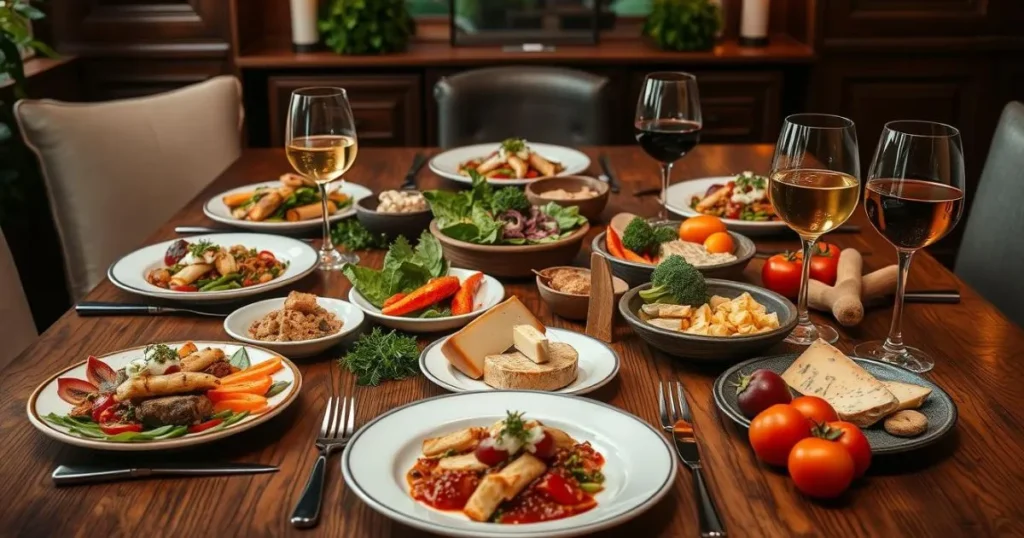
Don’t be shy about reaching out to famous food writers, editors, or influencers. Tell them you admire their work and ask if you can help or work together. These connections can lead to exciting projects, help you grow your audience, and offer valuable advice as you improve your writing skills.
FAQ
What is the professional word for food and drinks?
The term “culinary” or “gastronomic” is used for food and drinks. These words cover all aspects of food and drink, like making, presenting, and enjoying different dishes and drinks.
Why are food and drink important?
Food and drink are key parts of our lives. They give us energy and are important for culture, social life, and feelings. Writing about food and drinks can make readers appreciate and understand the culinary world better.
What is the best topic about food?
There are many interesting topics in food and drinks. Some great ones include local and traditional foods, the history of dishes or ingredients, pairing food and drinks, and how food affects culture and society. Also, topics like sustainability, ethical food sources, and innovation in cooking are fascinating.
How do you write an essay on the topic of my food?
To write an essay about food, start with a clear plan. Define what you want to talk about, like a dish, ingredient, or theme. Then, find reliable sources and use sensory words to describe the food’s taste, texture, and look.
Include stories about culture, history, or personal experiences to make your essay richer. Organize your thoughts well and back up your points with evidence. This will make your essay interesting and informative.
How do you describe food and drinks?
To describe food and drinks well, use vivid language. Describe how it looks, smells, feels, and tastes. Use words like “crisp,” “flaky,” or “rich” to make your description clear.
Also, talk about how it’s made, its cultural importance, or your personal experience with it. This adds depth and interest to your description.
What is a food and beverage writer?
A food and beverage writer creates content about food and drinks. They write reviews, menu descriptions, articles, blog posts, and educational pieces. Their goal is to engage and inform readers, making them want to try new foods and drinks.
How to write food writing?
Good food writing combines several techniques. First, find your unique voice that speaks to your audience. Use sensory words to describe the food’s look, smell, taste, and feel.
Add cultural, historical, or personal touches to make your writing richer. Organize your ideas clearly and support your points with evidence. Always keep learning about food to inspire your writing.

